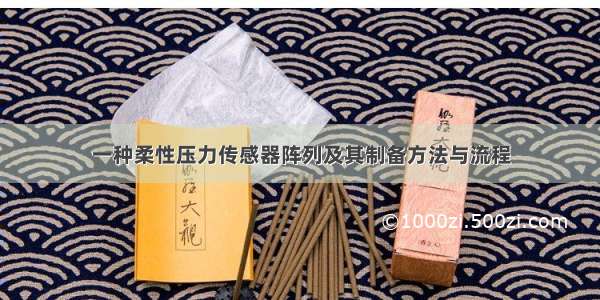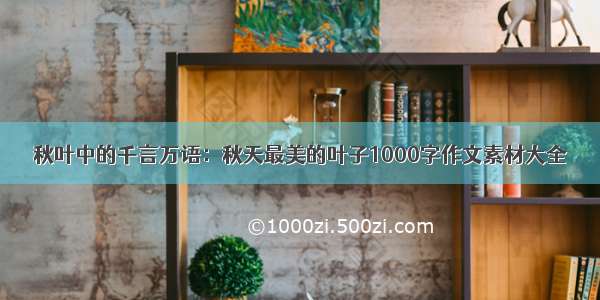
A metal-electrode-free, fully integrated, soft triboelectric sensor array for self-powered tactile sensing
Lingyun Wang, Yiming Liu, Qing Liu, Yuyan Zhu, Haoyu Wang, Zhaoqian Xie, Xinge Yu & Yunlong Zi
(DepartmentofBiomedicalEngineering,CityUniversityofHongKong,Kowloon,HongKongSAR,ChinaDepartmentofMechanicalandAutomationEngineering,TheChineseUniversityofHongKong,Shatin,N.T.,HongKongSAR,China)
Microsystems & Nanoengineering:volume 6, Article number:59()
引用本文:/articles/s41378-020-0154-2
传感器阵列(8×8)利用传感器单元及相连电极线之间的高度差,有效降低了源自电极的串扰而无需额外的屏蔽层。
.柔性一体化集成及蛇纹线电极结构使传感器阵列能在弯曲状态下触觉传感。
采用聚离子凝胶替代金属电极,制备工艺简单,成本低廉。
近年来,柔性/可穿戴电子设备先进技术的迅猛发展使得其在电子皮肤和人机界面中具有多种广泛的应用。尤其是能够将物理触摸转换为电信号的触觉传感器已经展示了其在人体健康监测、安全监控和人工智能中的实际应用。这些触觉传感器的传感机制主要包括电容式、压阻式和压电式。同时,另一种基于摩擦纳米发电机(TENG)的传感器引起了研究人员的广大兴趣,这类传感器是基于摩擦效应和静电感应的耦合传感机制,具有高灵敏度、低成本、可选材料多样性以及零功耗等优点。
目前报导的基于TENG的摩擦电触觉传感器已经展现了非常吸引人的性能,然而,其制造的过程普遍都涉及较为昂贵的专用设备或使用高成本的金属电极,这使得器件的制造过程复杂化并显着增加了大规模生产的成本。因此,非常需要既简单又经济的制备过程。此外,基于摩擦电的传感阵列通常还存在另一个问题,即由静电感应引起的传感器单元与电极之间的串扰,这种串扰极大的限制了传感阵列对接触物体响应进行精准位置识别的实际应用。因此,很多研究致力于降低这些无用的串扰,例如引入介电屏蔽层或者金属屏蔽层。然而需要考虑的是,引入更多层数一方面会使制备过程复杂化,另一方面不同层之间弹性模量的不匹配会对器件整体的拉伸性/柔性造成一定的影响。
水凝胶/离子凝胶作为另一种有前景的导体因其具有高导电性、透明性和可拉伸性的优点,已广泛应用于触摸屏、传感器、TENG和软体机器人。香港中文大学訾云龙和香港城市大学于欣格研究团队提出了一种简便、低成本的工艺来制造无金属电极并且完全一体化集成的柔性摩擦电传感器阵列(ISTSA)。该传感器阵列由作为摩擦层的弹性体(Ecoflex)和封装好的作为传感器单元及电极的聚乙烯醇/聚乙烯亚胺(PVA/PEI)凝胶构成。该ISTSA通过在传感器单元和蛇形电极线之间的高度差来有效降低电极引起的串扰而无需再引入任何屏蔽层。另外,基于单电极TENG模式,研究了单个传感器单元对各种接触材料、压力灵敏度、不同机械刺激以及长期稳定性方面的输出特性。此外,利用实时传感监测来自于电极对相邻传感器单元的串扰,得到了该ISTSA的信(传感单元信号)噪(电极对传感单元串扰)比大于八倍。通过轻触传感器单元可以点亮相应位置的发光二极管(LED)展示了ISTSA在位置追踪和人机界面方面的潜在应用。
图文展示1:ISTSA的制备流程图。
(a)ISTSA制备过程示意图。(b)b1,2-从3D模板转移后柔性基底的照片;b3-注入导电凝胶后的照片;b4-ISTSA的照片。
ISTSA的制备过程如图1a所示。首先,3D打印8×8传感器单元和蛇形电极线组成的设计图案模板,每个单元的尺寸为5mm×5mm×5mm(长×深×宽)。蛇形结构电极(宽度1mm,深度0.6mm)是为了确保ISTSA具有一定的可拉伸性。然后将Ecoflex 00-30或00-50倒入模板中以确保完全覆盖。在室温下干燥后,柔软及带有图案的弹性体就可以从模板分离下来,传感器单元及蛇形线的位置留下空腔(图1b-1和2)。然后把PVA/PEI凝胶注入这些空腔中,并在蛇形线的两端连接导电胶带(图1b-3)用于测试连接。最后在弹性体平面上薄薄的倒一层Ecoflex 00-30来密封器件。在空气中充分干燥后,就可以获得ISTSA(10cm×10cm×0.6cm)(图1b-4)。
图文展示2:单个传感器单元的工作机制及输出性能。
a)单个传感器单元的工作机制。(b)相同机械刺激条件下,单个传感器单元对于不同接触材料响应的输出电压(面积1 cm2)。(c)使用Al作为接触材料时单个传感器单元输出电压对于输入压强的函数。(d-e)手指触摸单个传感器单元(插图中红色为触摸位置)时传感阵列的输出电压分布(数据采集仪器的内阻为1MΩ)。
单个传感器单元的工作机制如图2a所示,基于单电极TENG模式,接触物体与器件表面Ecoflex由于摩擦效应产生电荷分布,作为离子导体的传感器单元在物体与器件接触分离的过程中感应Ecoflex上分布的电荷,随之与地面之间变化的电势差促使交流电信号的产生。图2b展示了不同接触材料与传感器单元接触时不同的电压信号。以Al为接触材料,单个传感器单元对于5~50kPa输入压强的线性灵敏度为0.063V kPa–1(图2c)。图2d,e分别显示了手指触摸其中两个传感器单元时(红色为触摸位置)传感器阵列的电压响应信号(>3.7V),相邻传感器单元的串扰较小在0.01~0.55V之间。
图文展示3:ISTSA的单个传感器单元响应各种机械刺激的输出特性。
(a)与不同面积的Al接触时的输出电压和(b)输出电荷。(c)不同机械输入位移下的输出电压(以Al为例)。(d)在不同输入频率下的输出电压和(e)电流(以Al为例)。(f)与Al接触的长期稳定性(插图显示35至39周期和2187至2191周期的输出)。(g)在平坦状态(180o)和弯曲状态(116.9o)下,手指触摸ISTSA一个传感器单元的输出电压,(h)电流及(i)电荷。
以Al作为接触材料,考察了ISTSA单个传感器单元对不同接触面积、机械力输入位移、频率等的输出特性及稳定性。可以看到,随着接触面积从1cm2增加到4cm2,输出电压及输出电荷都相应增加(图3a,b)。位移的增加(2mm到20mm)同样使输出电压得到提高并在20mm时趋于稳定(图3c)。外力的输入频率对传感器单元的输出电压和电流信号也有影响,低频率时的输出较高(图3d,e)。传感器单元在2250多次接触分离下依然保持良好的触觉稳定性(图3f)。由于采用蛇形电极线及柔性一体化集成结构,ISTSA可以在弯曲的状态下传感。图3g-i展示了ISTSA在180o及116.9o的状态下手指触摸单个传感器单元的电压、电荷及电流的输出特性比较,结果表明器件的一大优势是可以在弯曲下工作。
图文展示4:电极线上三个不同触摸位置对传感器单元输出特性影响的比较。
(a)触摸位置1(红色圆圈)。(b)手指触摸(a)中位置时,1至16个传感器单元的实时输出信号。(c)传感器单元15的信噪比(信号:单元15的输出;噪音:触摸红色位置时单元15的输出)。(d)触摸位置2(红色圆圈)。(e)手指触摸(d)中位置时,1至16个传感器单元的实时输出。(f)传感器单元5的信噪比(信号:单元5的输出;噪音:触摸红色位置时单元5的输出)。(g)触摸位置3(红色圆圈)。(h)手指触摸(g)中红色位置时,1至16个传感器单元的实时输出。(i)传感器单元11的信噪比(信号:单元11的输出;噪音:触摸红色位置时单元11的输出)。
为了使传感器阵列能够精确地对触摸位置进行识别,需要解决的关键问题是传感器单元与电极线之间的串扰。该ISTSA由于在传感器单元和电极线之间引入了高度差,可以极大的降低电极线对传感器单元的串扰。图4a,d,g显示了手指触摸器件的三个不同位置(红色标出),相应器件上1至16个传感器单元的输出如图4b,e,h所示。其中串扰最大的传感器单元(15、5和11)(噪音)和自身输出(信号)的比较分别如图4c,f,i所示,可以得到传感器单元的信噪比大于8。
图文展示5:ISTSA对于不同触摸样式的电响应。
(a)设计触觉响应模式“CUHK”。(b)ISTSA上对应模式图案“CUHK”展示。(c)ISTSA上“CUHK”的电响应。(d)设计触觉响应模式“ZI LAB”。(e)ISTSA上对应模式图案“ZI LAB”展示。(f)ISTSA上“ZI LAB”的电响应。
为了展示ISTSA对于触觉响应的均匀性,分别设计了两种触觉响应模式“CUHK”和“ZI LAB”如图5a,d所示。制备了两个ISTSA器件,在器件上对应的模式图案如图5b,e所示。用手指轻触两个ISTSA上“CUHK”和“ZI LAB”样式的实际输出电响应如图5c,f所示,其电压响应分别分布在1.2~3.6V及1.6~4.6V之间。电压响应的微小波动不仅阐明了单个ISTSA中传感器单元的均匀性,也阐明了器件的可重复性。
The dramatic advances in flexible/wearable electronics have garnered great attention for touch sensors for practical applications in human health monitoring and human–machine interfaces. Self-powered triboelectric tactile sensors with high sensitivity, reduced crosstalk, and simple processing routes are highly desirable. Herein, we introduce a facile and low-cost fabrication approach for a metal-electrode free, fully integrated, flexible, and self-powered triboelectric tactile sensor array with 8-by-8 sensor units. Through the height difference between the sensor units and interconnect electrodes, the crosstalk derived from the electrodes has been successfully suppressed with no additional shielding layers. The tactile sensor array shows a remarkable sensitivity of 0.063 V kPa–1 with a linear range from 5 to 50 kPa, which covers a broad range of testing objects. Furthermore, due to the advanced mechanical design, the flexible sensor array exhibits great capability of pressure sensing even under a curved state. The voltage responses from the pattern mapping by finger touching demonstrate the uniformity of the sensor array. Finally, real-time tactile sensing associated with light-emitting diode (LED) array lighting demonstrates the potential application of the sensor array in position tracking, self-powered touch screens, human–machine interfaces and many others.
Lingyun Wangreceived her Ph.D. degree from the School of Energy and Environmentat City University of Hong Kong in . She joined the Chinese University ofHong Kong as a Postdoctoral Researcher in Prof. Yunlong Zi’s group in August. Her current research interests include triboelectric nanogenerator formechanical energy harvesting, self-powered systems, and wearable electronics.
Yiming Liuis a PhD student in the Department of Biomedical Engineering at the City University of Hong Kong since , research assistance in the Department of Architecture and Civil Engineering since . He received his Bachelor degree in Tianjin University in , and his M.Sc. in Hong Kong University of Science and Technology in . His research interests include piezoelectric nanogenerator, triboelectric nanogenerator, flexible electronics, skin-integrated electronics, and wind energy.
Xinge Yuis currently an Assistant Professor of Biomedical Engineering at City University of Hong Kong (CityU). He finished his Ph.D. research of printable flexible electronics at Northwestern University (NU) and University of Electronic Science and Technology of China in . From to , Xinge Yu was a postdoc. in the Center for Bio-Integrated Electronics at NU and an adjunct research assistant professor in the Department of Materials Science and Engineering at the University of Illinois at Urbana-Champaign. His research focus on developing skin-integrated electronics and bio-electronics, and conducts multidisciplinary research addressing challenges in practical applications, such as biomedical electronics with compatible physical and chemical properties, and real-time health monitoring.
Email:
xingeyu@cityu.edu.hk
Prof.Yunlong Zireceived his B.Eng. degree from the Department of Materials Science and Engineering at Tsinghua University in . He received his Ph.D. degree from the Department of Physics and Astronomy at Purdue University in . After his graduate study, he worked as a Postdoctoral Fellow in the School of Materials Science and Engineering at Georgia Institute of Technology during -. Dr. Zi joined the Department of Mechanical and Automation Engineering at the Chinese University of Hong Kong as an Assistant Professor in . His current research interests mainly focus on triboelectric effect, high-efficiency mechanical energy harvesting through triboelectric nanogenerators (TENG), discharge effect in TENG, TENG triggered wireless sensing system and high-voltage applications. As the 1st and corresponding authors, his research studies have been published in top-notch journals, including Nature Nanotechnology, Nature Communications, Advanced Materials, Nano Letters, ACS Nano, Nano Energy, and etc. He was honored as the winner of MRS Postdoctoral Award by Materials Research Society in , as the first recipient from Georgia Tech; the Emerging Investigators by Journal of Materials Chemistry C in ; and one of "5 students who are transformation makers" as highlighted in Purdue homepage in .
Email:
ylzi@cuhk.edu.hk
单位介绍:
The Department of Mechanical and Automation Engineering (MAE) was established in 1994 with 5 faculty members inthe areas of control, CAD/CAM, robotics, and computer vision transferred fromother departments. Currently, the Department offers programmes leading to BEng,MSc, MPhil and PhD degrees, and starting from -13, a newly establishedundergraduate degree programme in Energy Engineering. There are 22 faculty members including 10 Professors, 1 Associate Professor, 8 Assistant Professors,1 Research Assistant Professor, 1 Senior Lecturer and 1 Lecturer. Many of ourfaculty members have established themselves as the world class scholars. As thesmallest mechanical engineering department in Hong Kong, we have 1 member ofChinese Academy of Engineering, 4 IEEE Fellows, 3 ASME Fellows, and severalfellows of other major societies such as APS, IAPR, and IFAC. We are especially proud of the quality of our graduates. Many of our graduates are successful entrepreneurs or technical leaders in Hong Kong. Over a dozen of our graduates have held faculty positions in reputable universities in the USA, Europe,Australia, and Hong Kong. Our students and colleagues have consistently received prestigious regional, national and international awards. Some awards received by the students and faculty members of the MAE Department in recentyears are as follows: two China State Natural Science Second Prizes, and; two Natural Science Awards (one first prize and one second prize) from Ministry of Education, China, and ; ASME Design Automation Award,; the Champion of First and Third IMechE Greater China Region Design Competition, and ; Neural Networks Pioneer Award of the IEEE Computational Intelligence Society, ; ASME Best Paper Award in Structures,; IEEE/ASME Transactions on Mechatronics Best Paper Award, ; IEEETransactions on Neural Networks Outstanding Paper Award, .
主要研究领域:
Prof. Zi’s group:
·Triboelectric effect: the mechanism of generating static surface charge by contact or sliding motions;
·Mechanical energy harvesting:fundamental studies and experimental demonstration of converting mechanical energy to be electricity, mainly through triboelectric nanogenerators;
·Discharge effect in TENG: the fundaments and applications of the discharge behaviors in TENG.
·TENG triggered wireless sensing system and high-voltage applications: novel applications utilizing high-voltage output of TENGs, especially in wireless sensing.
Selected recent publications by Prof. Zi’s group:
•X. Xia, J. Fu, Y. Zi#, A Universal Standardized Method for Output Capability Assessment of Nanogenerators, Nature Communications, 10:4428 ()
•J. Fu, X. Xia, G. Xu, X. Li, Y. Zi#, On the Maximal Output Energy Density of Nanogenerators, ACS Nano, 13 (11), 13257-13263 ()
•G. Xu, X. Li, X. Xia, J. Fu, W. Ding, Y. Zi#, On the Force and the Energy Conversion in Triboelectric Nanogenerators, Nano Energy, 59, 154-161 ()
•X. Li, T.H. Lau, D. Guan, Y. Zi#, A Universal Method for Quantitative Analysis of Triboelectric Nanogenerator, Journal of Materials Chemistry A, 7, 19485-19494 ()
•J. Wang, H. Wang, X. Li, Y. Zi#, Self-Powered Electrowetting Optical Switch Driven by a Triboelectric Nanogenerator for Wireless Sensing, Nano Energy, 66, 104140 ()
•J. Wang, C. Meng, Q. Gu, M.C. Tseng, S.T. Tang, H.S. Kwok, J. Cheng, Y. Zi#, Normally Transparent Tribo-Induced Smart Window, ACS Nano, /10.1021/acsnano.0c00107 ()
Prof. Yu’s group:
Yu, X.#,Xie, Z.#, Yu, Y.#, Lee, J.#, Ruban, J., V-Guardado, A., Luan, H., Ning, X.,Akhtar, A., Li, D., Ji, B., Liu, Y., Sun, R., Cao, J., Huo, Q., Zhong, Y., Lee,CM., Kim, SY., Gutruf, P., Zhang, C., Xue, Y., Guo, Q., Chempakasseril, A.,Tian, P., Lu, W., Jeong, J., Yu, YJ., Corman, J., Tan, CS., Kim, BH., Lee, KH.,Feng, X., Huang, Y., Rogers, JA., Skin-Integrated Wireless Haptic Interfacesfor Virtual and Augmented Reality,Nature, , 575,473-479.
Yu, X.#, H.Wang#, X. Ning#, R. Sun, M. Salomao, H. Albadawi, A. Silva, Y. Yu, Li. Tian, A.Koh, C.M. Lee, A. Chempakasseril, P. Tian, M. Pharr, J. Yuang, Y. Huang, R.Oklu, J. A. Rogers, Needle-shaped ultrathin piezoelectric microsystem forguided tissue targeting via mechanical sensing.Nature BiomedicalEngineering, , 2, 165 (Cover of the issue).
Hou, S., Yu, J., Zhuang, X., Li, D., Liu, Y., Gao, Z., Sun, T., Wang, F.,Yu,X.*, Phase separation of P3HT/PMMA blend film formed semiconducting anddielectric layers in organic thin-film transistors for high sensitivity NO2detection,ACS Applied Materials & Interfaces, , 11,44521-44527.
Liu, Y., Wang, L., Zhao, L., Yao, K., Xie, Z., Zi, Y.*,Yu, X.*,Thin, Skin-Integrated, Stretchable Triboelectric Nanogenerators for TactileSensing,Advanced Electronic Materials, , 6, 1901174.
《Microsystems & Nanoengineering》是Nature出版集团(现SpringerNature)出版的第一本工程类英文期刊, 由中国科学院电子学研究所与Nature出版集团合作出版。本刊由吴一戎院士担任主编,美国明尼苏达大学麦克凯特杰出教授崔天宏博士和英国皇家工程院院士、现英国Bath大学校长Ian White教授联合担任执行主编。来自15个国家和地区的48位专家组成了国际化编委会,海外编委比例超过70%,其中有10位编委是来自美国、中国、加拿大、英国、瑞典、荷兰、澳大利亚等国的院士。
《Microsystems & Nanoengineering》借助中科院电子所与SpringerNature各自的专长和优势,以国际化的编委会为依托,面向国际一流专家组稿约稿,期刊研究成果获得了相关领域研究者的广泛关注,在微系统与纳米工程领域已产生了广泛的影响。
在编委会和编辑部的共同努力下,《Microsystems & Nanoengineering》被SCIE, EI, Scopus和PubMed等国际重要数据库收录。JCR影响因子为5.048,期刊国际学术地位稳固(仪器仪表学科JCR影响因子排名第6/64,Q1区)
关注公众号
请长按并关注期刊公众号获取更多信息
微信入群
为了便于学术交流,提供优质服务,编辑部建立了微信群“MINE 微系统与纳米工程”,需要加群的科学家,请先加编辑个人微信,并注明姓名+单位,然后由编辑邀请进群。
(营销,广告勿扰)
















